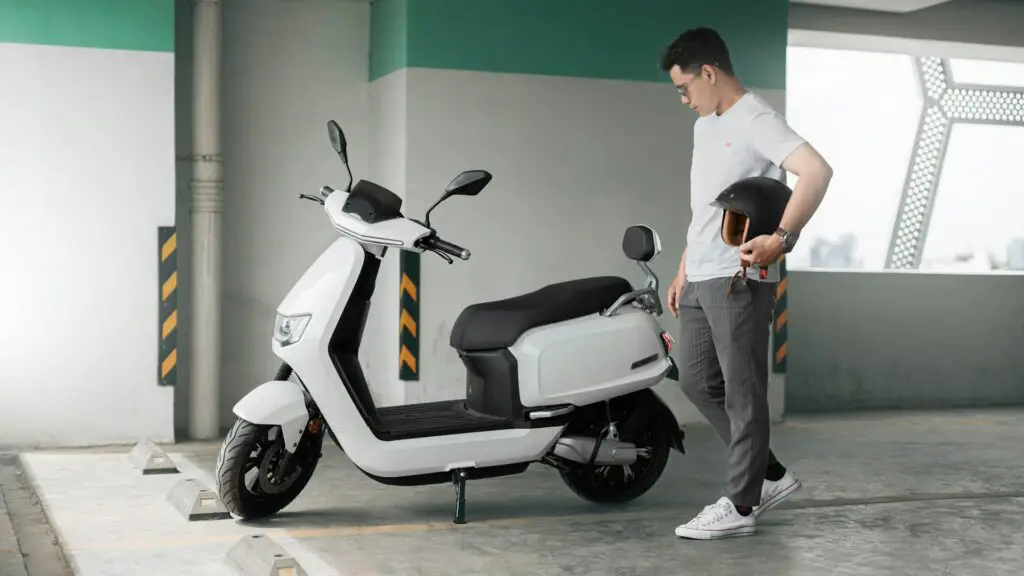Electric scooters are growing in popularity, offering a convenient and eco-friendly way to navigate urban landscapes. However, one question often arises: why are they so expensive?
While electric scooters promise efficiency and sustainability, their price tags can sometimes deter potential buyers. Let’s break down the factors contributing to the cost of electric scooters and explore what makes them a premium product.
1. Advanced Battery Technology
At the heart of every electric scooter lies its lithium-ion battery, which is one of the most significant cost drivers. These batteries are not only lightweight but also offer impressive energy density, enabling scooters to travel long distances on a single charge.
However, producing these batteries involves expensive raw materials like lithium, cobalt, and nickel. Add to this the research and development (R&D) efforts to improve battery efficiency and safety, and it’s clear why they don’t come cheap.
- What You’re Paying For:
- Long-lasting battery life.
- Faster charging times.
- Compact yet high-capacity energy storage.
2. Electric Motors and Controllers
The electric motor is the powerhouse of the scooter. High-quality motors designed for electric scooters deliver efficient power output and are built for durability. These motors must balance speed, torque, and energy efficiency, which requires precision engineering and high-grade materials.
Additionally, the motor’s controller—a crucial electronic component—ensures smooth acceleration, braking, and overall performance. Advanced controllers also offer customizable riding modes, adding to the scooter’s appeal and cost.
- What You’re Paying For:
- A robust motor with optimized performance.
- Advanced features like regenerative braking and speed controls.
3. Premium Materials and Build Quality
Electric scooters are designed to withstand regular use while remaining lightweight for portability. Achieving this balance often means using aerospace-grade aluminum or high-strength steel in their construction.
Manufacturers also integrate features like suspension systems, weatherproofing, and puncture-resistant tires to enhance durability and ride quality. These premium materials and features add to the production cost.
- What You’re Paying For:
- A durable, long-lasting frame.
- Enhanced comfort and safety features.
4. Cutting-Edge Technology
Modern electric scooters are more than just transportation devices; they are often equipped with smart features like:
- Bluetooth connectivity for app integration.
- GPS tracking for navigation and anti-theft measures.
- LED displays showing speed, battery life, and other metrics.
These features require high-tech components and ongoing software updates, driving up costs.
- What You’re Paying For:
- Convenience through smart technology.
- Enhanced user experience and functionality.
5. Research and Development (R&D)
The electric scooter industry is highly competitive, and manufacturers invest heavily in R&D to improve performance, battery life, and safety. Innovations like regenerative braking, better waterproofing, and longer-lasting components don’t happen overnight.
This constant drive for improvement comes at a price, which is reflected in the cost of the scooters.
- What You’re Paying For:
- Continuous advancements in technology.
- Industry-leading safety and performance standards.
6. Manufacturing and Quality Control
Producing electric scooters involves sophisticated manufacturing processes to ensure that every unit meets strict quality standards. From precision welding to software calibration, each step in the production process adds to the overall cost.

Moreover, rigorous testing is conducted to guarantee safety and durability, which also contributes to the price.
- What You’re Paying For:
- A reliable and safe product.
- Attention to detail in manufacturing.
7. Import Duties and Supply Chain Costs
Many electric scooters are manufactured overseas, particularly in countries like China. Importing these products involves:
- Shipping costs.
- Customs duties.
- Tariffs imposed by certain countries.
Additionally, disruptions in the global supply chain—like those caused by the COVID-19 pandemic—have increased production and transportation costs, further driving up retail prices.
- What You’re Paying For:
- Logistics and importation expenses.
- Resilience against supply chain challenges.
8. Marketing and Branding
Premium electric scooter brands invest heavily in marketing, packaging, and customer support to stand out in a crowded market. Whether it’s sleek advertising campaigns or comprehensive warranties, these efforts ensure a positive customer experience but add to the overall price.
- What You’re Paying For:
- Brand reputation and trustworthiness.
- Better after-sales support.
Are Expensive Scooters Worth It?
While the high price of electric scooters may initially seem prohibitive, their long-term benefits often justify the cost. Consider these factors:
- Lower Operating Costs: Charging an electric scooter is far cheaper than refueling a gas-powered vehicle.
- Environmental Benefits: Electric scooters produce zero emissions, making them a sustainable choice.
- Durability: High-quality components mean fewer repairs and replacements over time.
How to Find a Cost-Effective Option
If you’re looking for an electric scooter that fits your budget, consider the following tips:
- Identify Your Needs: Do you need a scooter for short commutes or long-distance travel? Features like range and speed directly impact price.
- Compare Models: Research different brands and models to find a balance between features and affordability.
- Check for Deals: Keep an eye out for sales, refurbished models, or financing options to reduce upfront costs.
Final Thoughts
Electric scooters are expensive for a reason. From advanced battery technology and durable materials to cutting-edge features and rigorous quality control, every aspect of their design and production adds value.
While the upfront cost may seem high, the long-term benefits—both financial and environmental—make electric scooters a worthwhile investment for many riders. By understanding what drives their price, you can make an informed decision and choose the right scooter for your needs.
Discover more from Chikwem
Subscribe to get the latest posts sent to your email.